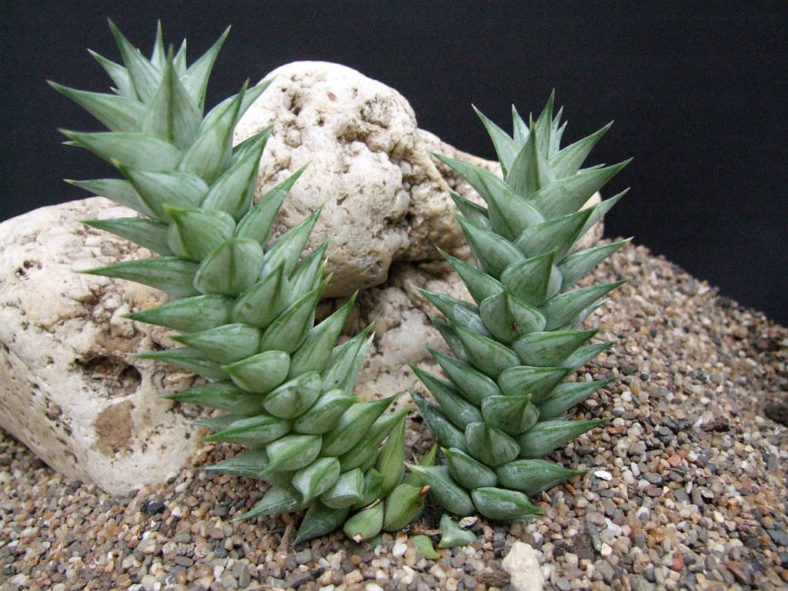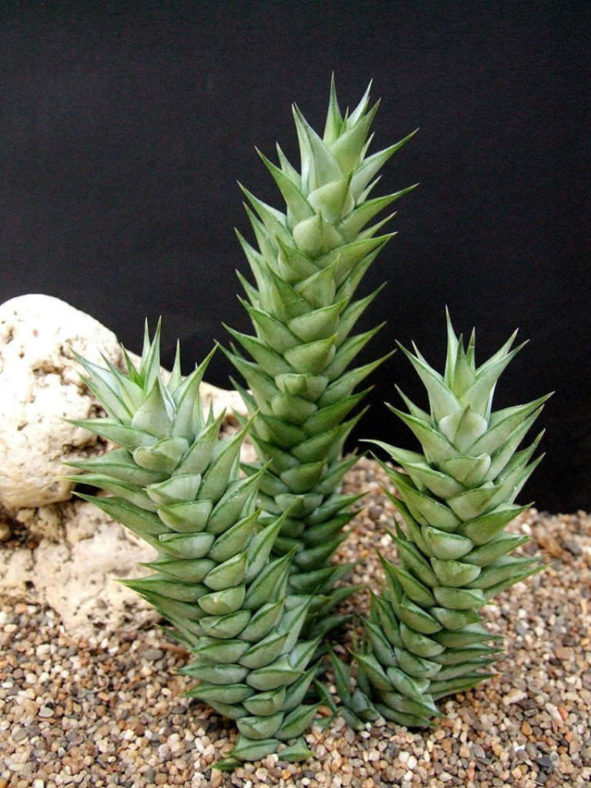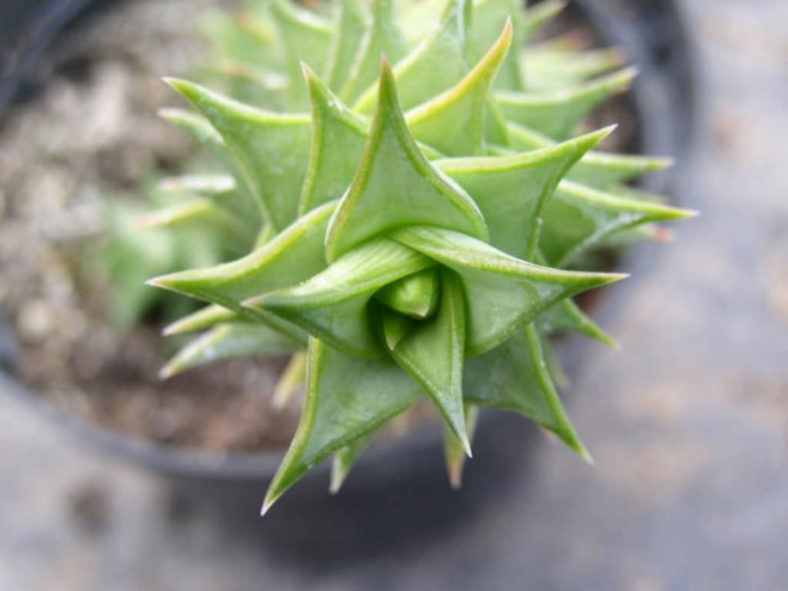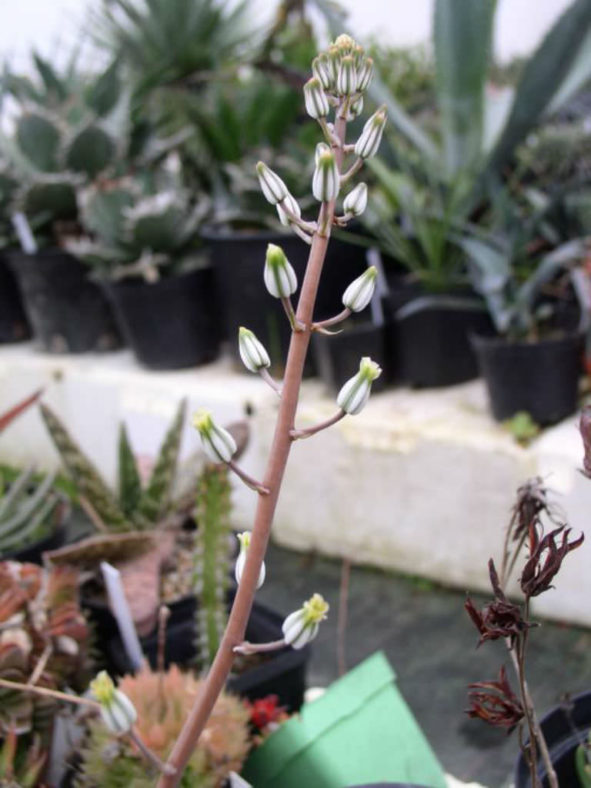Scientific Name
Astroloba herrei Uitewaal
Synonym(s)
Astroloba dodsoniana, Haworthia dodsoniana, Haworthia harlandiana, Tulista herrei
Scientific Classification
Family: Asphodelaceae
Subfamily: Asphodeloideae
Genus: Astroloba
Origin
Astroloba herrei is native to South Africa. It grows in Karroid flats and slopes from Prince Albert to Uniondale in the Western Cape.
Description
Astroloba herrei is a small succulent with sharply pointed leaves densely arranged in 5 more or less distinct spiraled rows around the stems, forming up to 1.6 inches (4 cm) wide columns. The stems grow up to 8 inches (20 cm) tall, initially erect, ascendant with age, producing offsets from the base or higher up. Leaves are deep green, covered with a thin layer of wax and many narrow, darker, longitudinal lines. They are ovate, up to 1 inch (2.5 cm) long, up to 0.6 inches (1.5 cm) wide, and 0.2 inches (0.5 cm) thick, abruptly ending in a rather long, rigid, very sharp point.
Flowers are erect-spreading, white with yellow tepals, pale green midribs, sometimes slightly inflated below outer tepals, and appear in lax racemes in winter and spring. The peduncle is simple, erect, reddish brown, somewhat waxy, and with few bracts. It is up to 13.8 inches (34 cm tall), including the racemes.
This species is easily mistaken for the closely related Astroloba spiralis but can be distinguished by its flowers. Both have puffed-up, inflated flowers, but those of A. herrei are smooth, unlike A. spiralis, which has a wrinkled transversely rugose perianth.

Hardiness
USDA hardiness zones 10a to 11b: from 30 °F (−1.1 °C) to 50 °F (+10 °C).
How to Grow and Care
Astroloba plants are increasingly popular as succulent ornamental due to the extraordinary beauty of their leaf structure. Some have intricate patterns of lines, margins, spots, and raised tubercles on their leaves. Nearly all of them display a crystal-like regularity in their leaf arrangement. This is not always apparent in wild plants, usually disfigured by their harsh habitat.
In cultivation, Astrolobas are at their best when provided with some protection from the full sun. However, Astrolobas can become remarkably beautiful and ornate in a semi-shade environment with highly well-drained soil and gentle conditions.
Unfortunately, when conditions are not ideal, occasional random leaves can die, shrivel up, and go brown all along their stem. This is unfortunate because much of the beauty of the plants comes from the intricate, crystalline pattern of their leaves. However, this disfigurement can be avoided by keeping the plants in optimal, fertile conditions – growing steadily and sheltered from stress.
See more at How to Grow and Care for Astroloba.
Links
- Back to genus Astroloba
- Succupedia: Browse succulents by Scientific Name, Common Name, Genus, Family, USDA Hardiness Zone, Origin, or cacti by Genus
Photo Gallery
Click on a photo to see a larger version.


